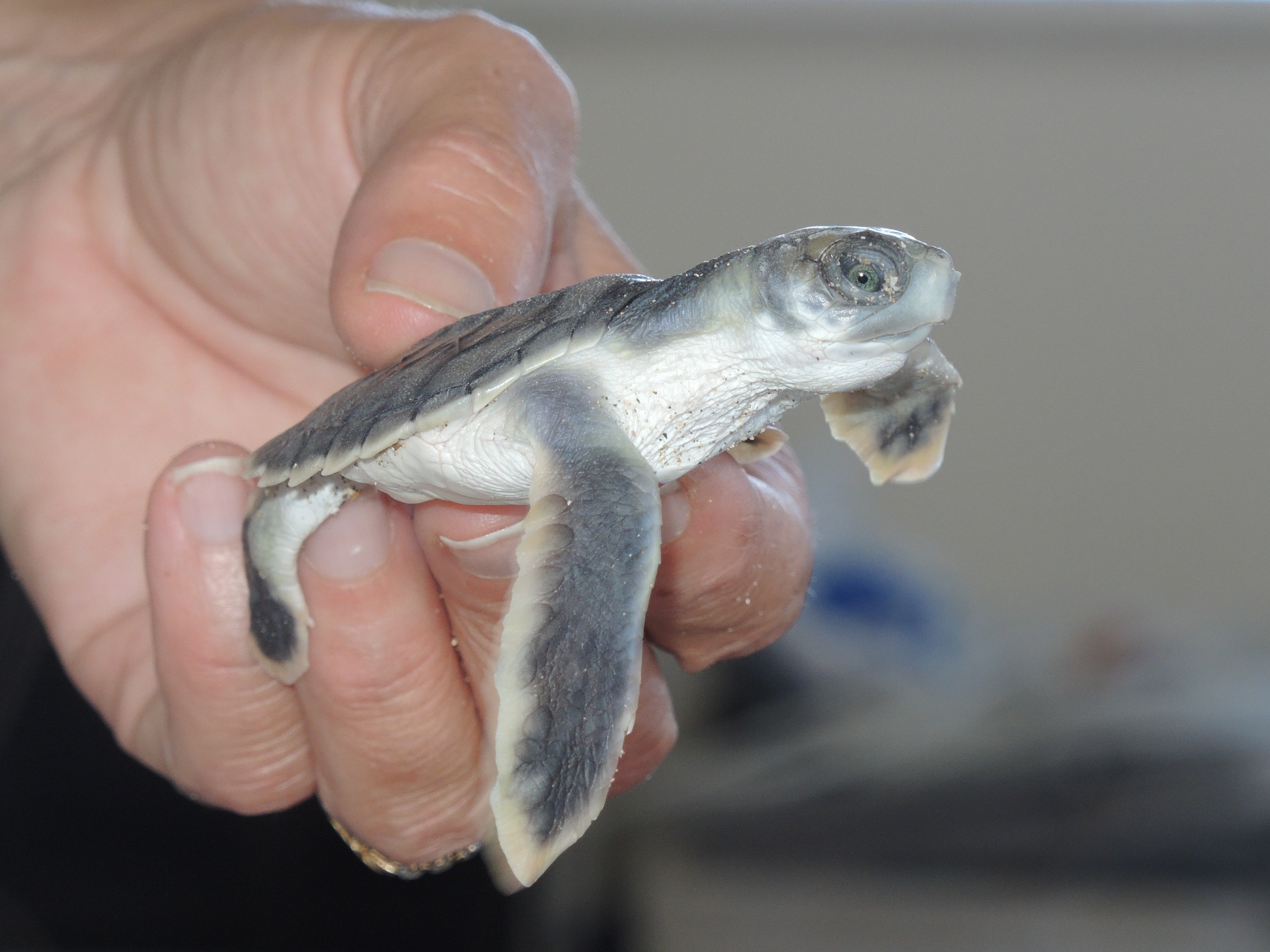Media Release
From: Australian Institute of Marine Science (AIMS)New research has revealed that marine turtle hatchlings entering the ocean close to jetties have a high likelihood of being eaten.
The study, published in Biological Conservation, found structures such as jetties are an attractive shelter for hungry fish as they lie in wait for an easy evening meal.
Lead author Phillipa Wilson, a PhD candidate at The University of Western Australia (jointly supervised through the Australian Institute of Marine Science), said the study provides evidence that jetties near turtle nesting beaches increase the predation of turtle hatchlings.
“Jetties attract large numbers of predatory fish, such as mangrove jack. They provide an artificial shelter for the fish, and when located near turtle nesting beaches can greatly increase the threat to hatchlings,” she said.
“Nearly three quarters of the hatchlings entering the sea for the first time were taken by fish while still close to shore. This means that baby turtles were seven times more likely to be preyed upon than at a beach nearby with no jetty”.
Dr Scott Whiting, from the Western Australian Department of Biodiversity, Conservation and Attractions’ marine science program said this research provides evidence to assist decision making around coastal developments near turtle-nesting beaches such as jetty installation or decommissioning of infrastructure.
“As coastal development is one of the primary threats to marine turtles around the world, understanding the effects of jetties will be extremely useful to managers when advising on environmental impacts associated with these structures,” he said.
The team of scientists from UWA, AIMS, DBCA and Pendoley Environmental tracked flatback turtle hatchlings on Thevenard Island off Australia’s north west coast. This marine turtle species nests only on Australian beaches and is classified as ‘vulnerable’ by the EPBC Act.
Small, sound-emitting tags were attached to 61 recently hatched flatback turtles to monitor their movements in the ocean. Signals from the tags were detected by a grid of underwater receivers, allowing scientists to track them as they swam out to sea.
Dr Michele Thums, co-author from the Australian Institute of Marine Science, pioneered the use of the tiny tags to remotely track turtle hatchlings in water, which allowed for predation rates of hatchlings to be measured remotely for the first time.
“Only a very small proportion of turtle hatchlings survive to maturity – this may be as low as one in one thousand. As the hatchlings represent the next generation, any increase in mortality, as we document here, can effect turtle population numbers in the future,” she said.
Ms Wilson said it was normal for turtle hatchlings to swim quickly in a straight line away from the beach, out to the relative safety of the open ocean.
“However, the baby turtles we tracked behaved differently by swimming parallel to the beach and many of them resided under the jetty during the day. This is when we realised we were no longer tracking swimming hatchlings, but tagged hatchlings inside the stomach of the fish that ate them,” she said.
The predatory fish used the jetty as shelter during the day, and at night they left the jetty to feed on hatchlings along the nearshore zone.
The paper ‘High predation of marine turtle hatchlings near a coastal jetty’ was published in Biological Conservation.
The project was a collaboration between the Australian Institute of Marine Science and The University of Western Australia with the Department of Biodiversity, Conservation and Attractions and Pendoley Environmental. Project funding was provided predominantly from DBCA through the Northwest Shelf Flatback Turtle Conservation Program.








